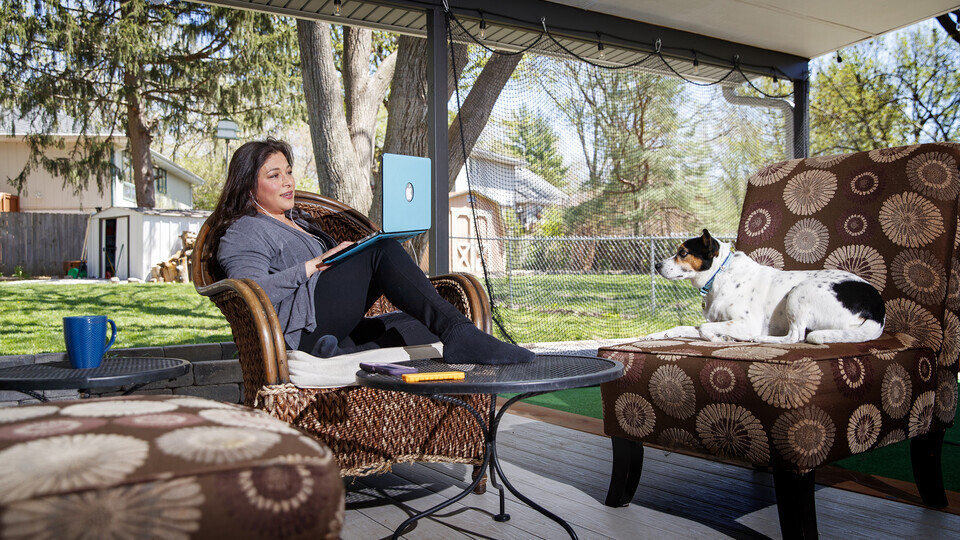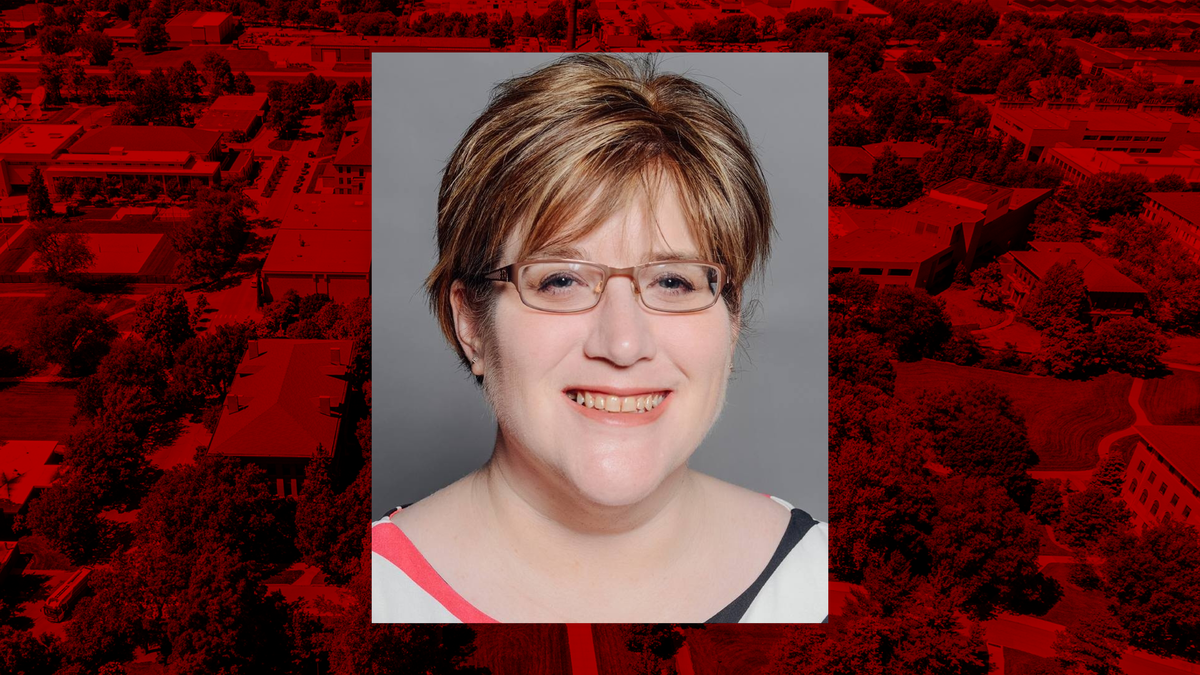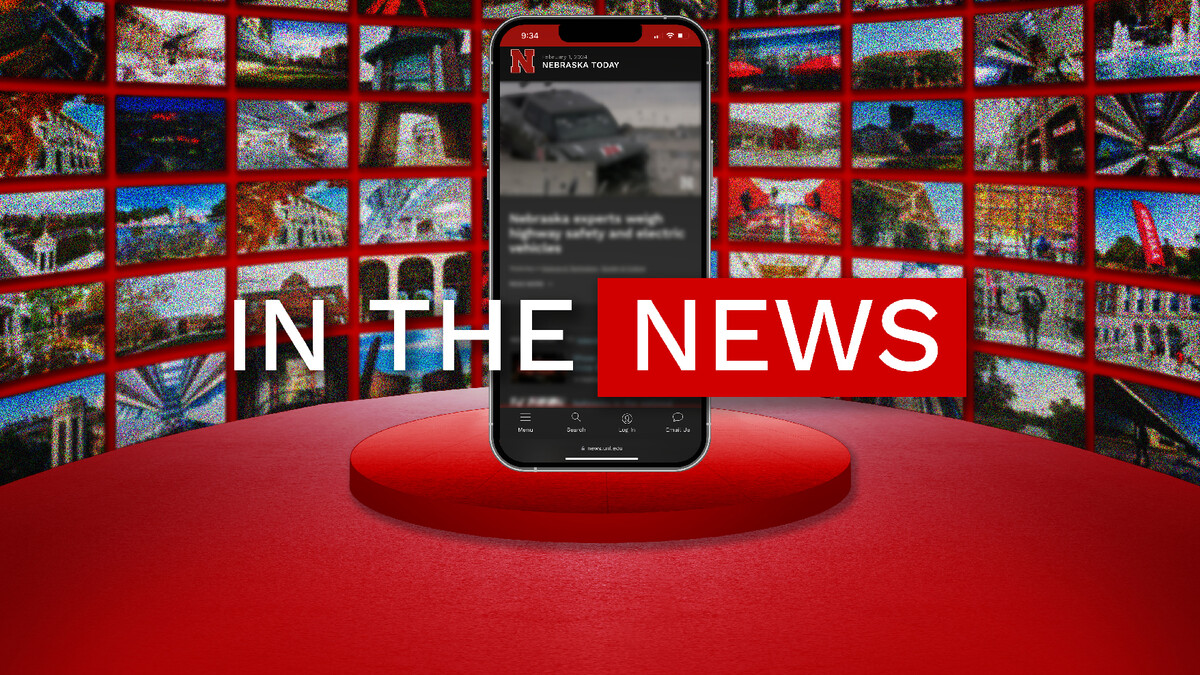
Lincoln, Neb. —In nearly every facet of human life, the spread of COVID-19 caused a massive shift.
Among the first to be affected were educational institutions, and instructors at the University of Nebraska–Lincoln took on the challenge of moving to remote instruction with gusto.
“I have been so incredibly proud at how our UNL community of students, faculty and staff have led through the change of this tumultuous semester,” Chancellor Ronnie Green wrote in an April 24 email to the university community. “In January, none of us could have imagined that this would transpire. Yet we were able to transition quickly into an online learning environment and largely emptying our campus of our people. We have accomplished this feat more smoothly and efficiently than many other universities in the country.”
To mark and appreciate an unprecedented semester, Nebraska Today checked in with faculty across campus to share what was successful, what was learned and how they’re approaching the future in the midst of a pandemic.
Amanda Morales | Education and Human Sciences
In Amanda Morales’ Multicultural Education and Teaching in a Pluralistic Society courses, life suddenly mirrored the lessons she wanted to impart on her students.
“Our Multicultural Education course, especially, talks about how important it is to model connectedness with students from all different backgrounds, students that are different from you, students who are dealing with really complex realities in their home life,” said Morales, associate professor in teaching, learning and teacher education. “The whole course is about teaching them how to be the best educator for all kids, so I had an opportunity, and it was important to me, to model those types of pedagogies with them.”
One way to do that, she said, was to home in on her communication with students.
“Being available to my students, and communicating a lot with them was vital, making sure that I was acknowledging their humanity and their well-being,” she said. “They were navigating such difficult social and emotionally jarring realities. Giving choice and flexibility in how students could engage with the class, I think, was also an important part of maintaining trust with them, and ended up allowing them to finish the semester strong.”
Craig Chandler | University Communication Morales held her last Zoom session with students April 30, from her backyard.Morales also spent time making sure that the syllabus, assignment details and class expectations were consistent and clearly explained, as students would be doing more independent work than originally planned. Morales relied on a variety of delivery methods for class, including recorded Zoom sessions, interactive Google slides, VidGrid, discussion boards, Kahoot, and other functions within Canvas.
“Without that in-person class time to answer questions, sometimes the only clarification or communication they're going to get that I can guarantee is what's written or what's included in the assignment,” Morales said. “It made me go back and really read what I was saying and really read my assignment descriptions and make sure that I was being very clear in where things were located.”
What she learned will make her a better communicator going forward, she said, regardless of where instruction will take place. The refocusing especially helped her prepare for teaching two courses over the summer term.
“In the feedback I got from students, they appreciated having all of the information there, and that it was very clear what they were expected to do and where they could find things,” she said.
Morales also encouraged her students to share their own experiences with their peers, adding an element to her classes that wouldn’t have existed outside of this situation. It was powerful, she said.
“It was important, and I think, humanizing for them to hear the struggles of their classmates,” Morales said. “For those that were struggling, it was nice for them to hear other people's struggles because it made them realize they weren't alone.”
Looking forward to fall, Morales is cautiously optimistic, but hopes more attention will be paid to graduate teaching assistants.
“Graduate teaching assistants, who themselves are often novice teachers, were juggling moving their own courses online, shifts in housing arrangements, and dealing with concerns about family back home, while also navigating being a student in this environment,” Morales said. “Being charged with moving to online instruction was a lot to put on graduate teaching assistants, and I think that we can strive to do better in supporting them. While this is all hindsight, moving forward, it’s important that we learn from this and are more attentive to the kinds of direct support we offer for graduate teaching assistants.”
— Deann Gayman | University Communication
Rick Alloway | Broadcasting
COVID-19 may have shut down the university in mid-March, but it didn’t stop journalism students and faculty members from running campus radio station 90.3 FM KRNU from afar.
Rick Alloway, associate professor of broadcasting, led the effort to keep KRNU on the air. Over the past two months, the station been run largely from Alloway’s laptop at home.
Alloway“I've got VPN access from my laptop sitting here in front of me, and I can get in and schedule the log so I can add the content to public service announcements. Our student music director continues to sift through CDs and all the digital downloads he gets and adds stuff in a Box folder — so we're still adding a lot of new content to the station, as much as we would if we were in Andersen Hall,” Alloway said.
During the pandemic, Alloway also began airing Lincoln mayor Gaylor Baird and Nebraska governor Pete Ricketts’ COVID-19 press briefings in the evening.
“I just think that it’s important information, given how rapidly this stuff changes every day,” Alloway said. “We've run several hours of that public affairs programming since they both started doing those daily updates.”
With a sudden shift to remote operations, providing students with the right software and VPN access to complete work from home was a challenge. Now that they’ve adjusted, Alloway said, those workers can do voiceovers and other station duties whether they’re in Lincoln or not.
“Those kinds of innovations and changes to how we do things are part and parcel to this environment, but they’re also things that commercial radio stations have been doing for a long time anyway, so it's a good step for us,” Alloway said.
— Lindsey Amen | University Communication
Eric Malina | Chemistry
Courtesy | Eric MalinaWhen students are struggling to understand a complex subject, the best solution is often visiting with a professor face-to-face to get to the root of the problem.
When the University of Nebraska–Lincoln shifted to remote instruction in March, Eric Malina, associate professor of practice in chemistry, knew he wanted to do his best to replicate that experience for students finishing his Chemistry 109 and Chemistry 221 courses online.
Using a combination of Zoom, Powerpoint, VidGrid and a document camera in his home office, Malina created pre-recorded lectures for students to watch on their own schedule. The document camera allowed him to write out formulas and concepts to help those who learn better visually, while Zoom gave him the ability to connect with his students on a more personal level.
“I brought all these technologies together to be able to not only speak and show my face with my students, but also to bring in my PowerPoint slides,” Malina said. “I'm a traditional lecturer, so I'm usually writing on the whiteboard. I wanted to try to keep that format as much as possible, even switching to remote instruction.”
The past two months, Malina said, have taught him a lot about how to better support students.
“While I learned a lot about how I can teach remotely, the biggest thing I took away from this semester was to always remember that I am teaching students,” Malina said. “Yes, I teach students about chemistry, but it is the student that needs to be at the forefront of everything I do. Sometimes a student who is struggling with a concept needs just a bit of encouragement rather than more example problems. Empathy and understanding can sometimes be the key to helping students succeed.”
Despite some of them dealing with difficult situations due to COVID-19, Malina said Huskers in his courses blew his expectations out of the water.
“We all scrambled to adjust, worked hard to stay on top of everything and were very happy to release some stress after everything was done,” Malina said. “Students not only had to learn all the course material, they also had to learn how to adjust their studying to the remote instruction context. I was extremely impressed on how well many of my students were able to adjust and even excel during this crazy semester.”
— Lindsey Amen | University Communication
Meghan Sindelar | Agronomy and Horticulture
As talk swirled about flattening the curve of COVID-19 cases and hospitalizations, some Husker faculty were soon looking to shorten the learning curve brought on by the university’s abrupt shift to remote teaching.
SindelarMeghan Sindelar’s experience teaching online courses, alongside a willingness to trial and incorporate online learning into in-person courses well before the COVID-19 outbreak demanded it, had her ahead of that curve.
Two years ago, the assistant professor of practice of agronomy and horticulture began teaching AGRO/HORT 134, a fully online edition of a one-credit lab that supplements a plant science course. While thinking through how to structure the lab, Sindelar and colleague Stacy Adams got an idea: have students snap photos of plants, identify them, then upload the images to Canvas for the class to collectively peruse.
Some of those assignments ask students to consider plant structures and how those structures help meet plant needs — the way that thicker leaves allow plants to better tolerate drought or drier climates, for instance. Others focus on reproduction or stages of growth. All help spur the visual learning and dialogue that are keystones of any good lab, she said.
“We realized that plants are all around us, and the thing folks gained from coming to class was the discussion on things like why experimental results varied or how differences in biology affect differences in management,” Sindelar said. “We do our best to replicate that aspect using the discussion boards and Zoom.”
Craig Chandler | University Communication As part of her online agronomy and horticulture labs, Meghan Sindelar asks students to snap and share plant photos via Canvas. Having survived a mid-semester shift to remote teaching, Sindelar now plans on integrating the photo-sharing activity into an in-person lab this fall.Sindelar was integrating similar online content into AGRO 366, a 66-student class on soil nutrients and fertilizers, when the novel coronavirus emerged this spring.
“I was very glad that, A, I had online teaching experience, and B, that the class was already set up as flipped, with a lot of content online,” she said.
Still, Sindelar said she did pick up tips from the final few weeks of the suddenly far-flung semester, which had her workshopping some online content for larger groups of students than she was accustomed.
“I found that, even if I have to say something 20 times, students retain information more when you are talking to just four to five of them,” she said, “than when you are talking to 80 to 100 of them.”
When classes do return to the classroom, Sindelar said she’ll be bearing in mind more of the opportunities afforded by the online environment. She’s already planning on adding photo-sharing assignments, previously reserved only for online labs, to the in-person AGRO 132 lab this fall.
“I see now that we can make it work for even more courses than we originally thought,” she said. “Students have a lot of materials in their surroundings and just need guidance on how to turn their observations into learning moments.”
— Scott Schrage | University Communication
Larkin Powell | Agricultural Sciences and Natural Resources
As expected, the transition to remote teaching came with a serious learning curve for all, but some things surprised even seasoned educators, including Larkin Powell.
Powell, associate dean and professor in the College of Agricultural Sciences and Natural Resources, had a lighter teaching load with one graduate course, but in his administrative role, he helped fellow faculty prepare for the switch and gave an assist with guest lectures.
Larkin Powell@LarkinPowellSee Larkin Powell's other TweetsToday’s 1.5-minute Teaching (yes I’m back!) comes to you from my backyard. I think it’s an important message to think about how you can adjust as we and our students start to deal with real impacts of #COVIDー19
55 8:10 AM - Apr 1, 2020 Twitter Ads info and privacy
This isn’t just about learning.
“We knew this wasn’t going to be a perfect semester, but I think we thought, ‘we’ll get through this next four or five weeks and then things will go back to normal,’ and now, we know that isn’t the case,” Powell said. “In retrospect, we probably underestimated the personal angle.
“There were more personal difficulties that students were having, such as having parents losing a job, or needing to support their family through working, too, and also faculty, who were juggling a lot of things. The crisis affected a whole manner of things that I don’t think we prepared for.”
On the flipside, helping move courses online demonstrated the fantastic work faculty were doing.
“I’ve always been a proponent in pursuing active, experiential learning opportunities for students,” Powell said. “We’ve always been trying to find new ways to do that and we weren’t always satisfied — we felt like we needed to do more.
“Truth is, when we had to switch from regular classes to this new remote format, we found out how much our classes have actually become models of active learning, because if everybody was teaching a lecture class, that would have been easier to move to an online format.”
Powell said CASNR faculty successfully used a wide variety of technologies and activities — with social distancing in mind — to keep active learning alive in the digital format.
“There were a lot of good ideas from colleagues about how to take that into a remote atmosphere, whether that was assigning a bird count in their backyard, a weekly species log or a group discussion,” he said. “It really came down to deciding what the faculty wanted the students to have by the end of the semester and working backward from that, and deciding which way was the best way do that for their class.”
Powell said the lessons learned are useful moving forward as the university prepares for an uncertain fall semester, likely with a hybrid of in-person and remote classes.
“My personal mantra is that we need to be creative and think about how to achieve our learning objectives but do it in a way that is respectful to our students, and ourselves,” he said. “We’re going to have to work hard to be inclusive when we think about how to innovate for the future — to be aware of demands people have on their plates.”
— Deann Gayman | University Communication







